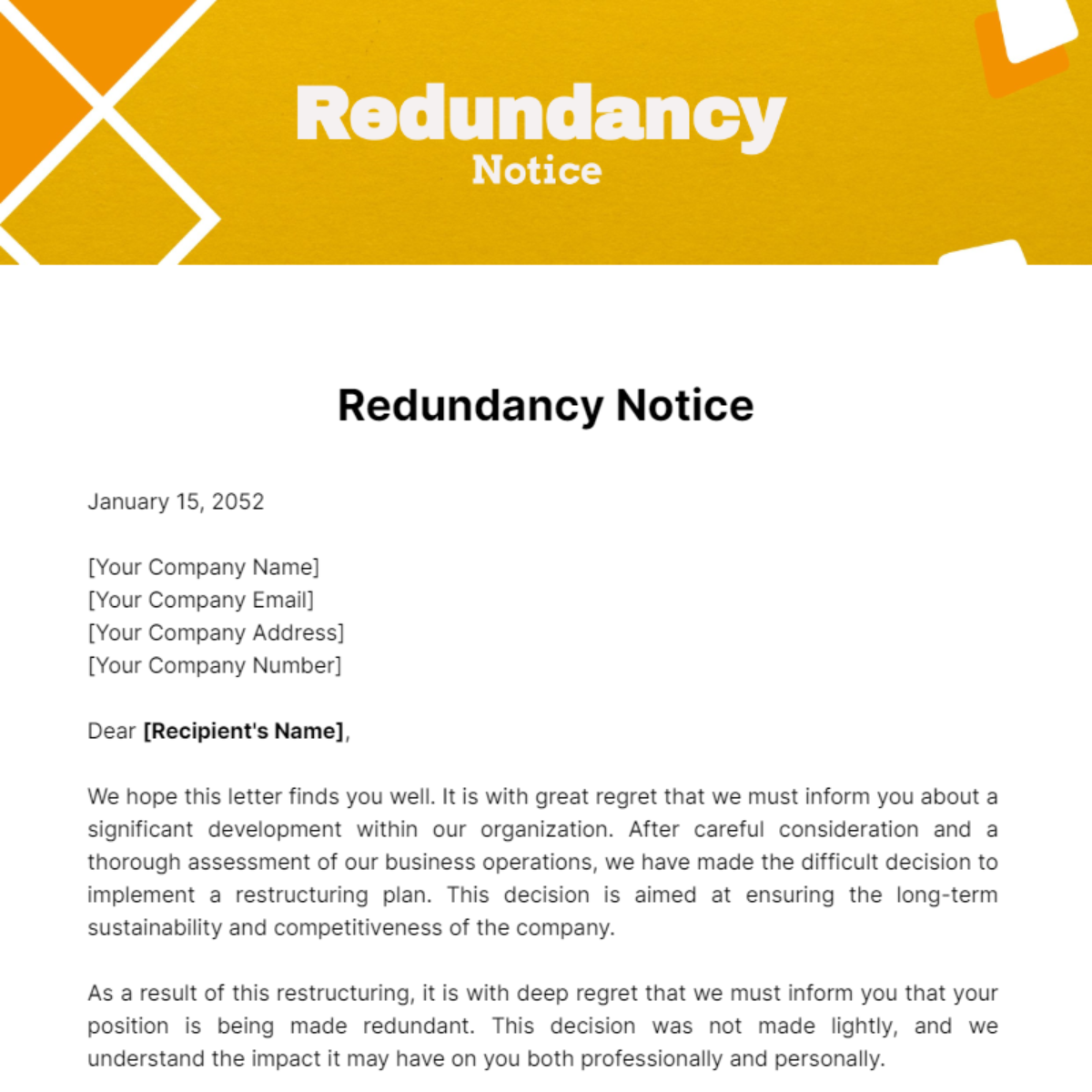Just How to Manage Redundancy Pay If Company Goes Bust: Key Details for UK Workers
Just How to Manage Redundancy Pay If Company Goes Bust: Key Details for UK Workers
Blog Article
Exploring the Interplay In Between Firm Redundancy and Organizational Versatility for Future Growth
In the vibrant landscape of today's company world, the intricate partnership in between business redundancy and organizational versatility arises as a crucial factor for continual development and success. Business often deal with the difficulty of striking a fragile balance between maintaining a level of redundancy to minimize threats and fostering adaptability to react promptly to the ever-evolving market needs.
Significance of Business Redundancy
Company redundancy is an essential element that improves business resilience and reduces functional risks. By incorporating redundancy procedures within the business structure, business can better stand up to unanticipated disturbances and changes in the organization setting. Redundancy acts as a tactical barrier, allowing companies to adjust and respond properly to unexpected challenges without compromising essential operations.
One key facet of the value of company redundancy is its duty in ensuring continuity throughout times of situation. When faced with abrupt changes or emergencies, redundant systems, sources, or employees can tip in to preserve important functions and prevent extensive disturbances. This connection not only safeguards the business's reputation and customer count on but likewise minimizes economic losses and operational downtime.

Methods for Business Versatility

One more important approach is investing in modern technology and infrastructure that can support flexibility and scalability. Carrying out electronic devices, automation, and data analytics can simplify procedures, boost performance, and offer important insights for educated decision-making. In addition, developing adaptable organizational structures that enable quick changes to market dynamics and consumer requirements is important for staying affordable in a rapidly progressing setting. By proactively determining prospective interruptions and chances, companies can proactively adjust and grow in an ever-changing organization landscape.
Harmonizing Redundancy and Flexibility
Accomplishing a harmonious equilibrium between functional redundancy and business versatility is extremely important in browsing the intricacies of a vibrant organization atmosphere. Redundancy within a company provides a safeguard, making sure connection and stability in operations. However, an extra of redundancy can lead to inefficiencies and hinder adaptability to transforming market conditions. On the various other hand, business versatility permits companies to react quickly to external interruptions and seize new chances. Striking the appropriate balance in between redundancy and flexibility is a fragile process that needs a deep understanding of the organization's objectives, sector characteristics, and risk tolerance.
To achieve this balance, companies need to perform regular assessments of their procedures to recognize locations where redundancy is necessary for risk reduction and where adaptability can drive development and growth. Implementing adaptable frameworks, promoting a society of continual discovering and enhancement, and encouraging open interaction throughout all levels of the company are essential strategies to integrate redundancy and adaptability effectively. By aligning these two crucial components, business can place themselves for sustainable development and success in an ever-changing business landscape.
Instance Studies on Adaptation Success
In analyzing instances of effective business adjustment, it becomes apparent that the interaction in between operational redundancy and adaptability is a defining factor in shaping resilient businesses. A DVD rental solution, Netflix demonstrated exceptional flexibility by transitioning right into a streaming system when digitalization interfered with the market. These instance studies underscore the importance of operational redundancy paired with business flexibility in fostering lasting redundancy if company goes bust development and competitiveness.
Structure Durability for Future Growth
Structure strength for future development calls for a tactical positioning of operational processes with market dynamics and emerging fads. Business have to adjust to changing settings by promoting a society of adaptability, development, and continuous renovation. Resilience entails not just bouncing back from obstacles however likewise proactively planning for future difficulties. One crucial aspect of structure resilience is buying robust risk administration strategies to go to my blog alleviate possible interruptions. This includes situation planning, diversifying supply chains, and creating backup prepare for various backups (who pays redundancy money).
Moreover, fostering solid partnerships with stakeholders, such as clients, employees, vendors, and the neighborhood, is vital for maintaining and weathering unpredictabilities trust fund and assistance during turbulent times. Efficient communication and transparency play a vital function in structure resilience, as they aid help with and line up assumptions partnership in browsing unpredictabilities.
In addition, companies require to prioritize understanding and development campaigns to upskill workers and outfit them with the essential tools to adjust to changing scenarios. By buying their workforce, companies can improve their versatility and dexterity, inevitably enhancing their strength for sustainable future growth.
Conclusion

In the vibrant landscape of today's service world, the complex relationship between business redundancy and organizational versatility arises as a crucial element for continual development and success. Companies frequently find out here now deal with the obstacle of striking a delicate balance in between preserving a level of redundancy to mitigate dangers and fostering flexibility to respond promptly to the ever-evolving market demands.To accomplish this balance, firms require to perform regular evaluations of their procedures to recognize locations where redundancy is essential for danger reduction and where versatility can drive innovation and development.In verdict, the interplay in between company redundancy and business adaptability is critical for future development. Structure resilience through a combination of redundancy and versatility will certainly make sure that firms are prepared for the obstacles of the future.
Report this page